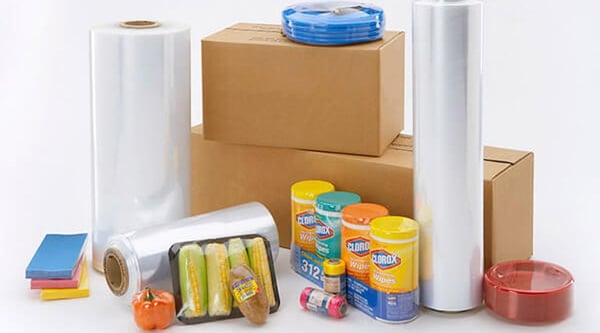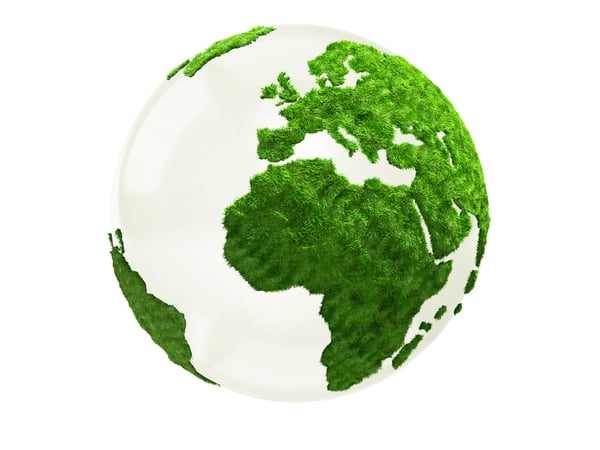Recycled Shrink Film: Is It Viable For All Products Yet?
Packaging Materials | Environment | The Business of Packaging
As concerns about plastic and its negative effects on the environment meet a fever pitch, companies all over the world are looking for sustainable and earth-friendly alternatives. As the great pacific garbage patch continues to grow, now more than ever, interest in bio-polymers and products made from recycled plastics are on the rise.
But, are they really viable options yet? In the article below, we will look at the technology behind recycled shrink films while asking the tough questions about their viability as a packaging material in 2019 and beyond.
What Is Recycled Shrink Film?
Recycled shrink film is, well... Exactly what it sounds like. But first, what is shrink film?
"Shrink film is a clear plastic film that forms to the shape of the product it is wrapped around when heat is applied to it's surface. It is commonly used to package foods such as frozen pizzas, pies and baked goods. Aside from food applications, shrink film is used to package everything from board games and books to toys and tools. There are literally millions of different types of products that shrink film can be used to package". - Industrial Packaging.

So with that in mind, recycled shrink film is simply shrink film that is made with some percentage of recycled shrink film that was previously used and collected for recycling.
Now that might sound like an awesome product and in theory, it totally is! However, recycled shrink film is still a very new product and one that is quite elusive in the USA. It is also not a product that can offer the same wide range of dynamics such as gauges of varying sizes and the strength that is commonly associated with brand new films.
Need Help Choosing The Right Shrink Film?
Environmental Impact
It is 2019 and therefore, everyone is concerned about the environmental impact of plastics, especially in regards to major problems like the Great Pacific garbage patch which continues to expand on a daily basis. Unfortunately, when it comes to business expenses, most companies are not willing to pay a higher fee for sustainable products and tend to hold off from purchasing until the environmentally-friendly options are more affordable.

When it comes to recycled shrink film, it appears that the most recycled byproducts included in the creation of these films currently stalls around 30%. While we would obviously like to see a 100% recycled product, when it comes to plastics and polymers, that is not always easy and all things considered, 30% is an impressive stat at this stage of the game.
From Plastics News Europe:
"With sustainability becoming increasingly important for consumers and their purchase decisions, RPC bpi has developed a 100% recyclable shrink film made of 30% post-consumer recyclate (PCR).
Developed by the company's protec packaging arm, the new X-EnviroShrink uses the Sustane recycled polymer from RPC bpi recycled products and has ultra-low carbon footprint, the company said in a 27 Nov release.
A recent survey of 1,000 British consumers, commissioned by RPC bpi protec, has shown that 83% of consumers are more likely to choose products with either less packaging or recyclable packaging, and 82% to use the services of a company that makes an effort to recycle and cut down waste"
There is no doubt that today's consumers are looking to buy more environmentally-friendly products and in many cases, pay more for said products. That being said, when it comes to shrink film, a slightly higher cost can result in thousands of dollars in extra costs per quarter. For some companies, this is not a justified expense and even more so when you consider shipping costs...
Geographical Dynamics
You may have noticed that the article above specifically talks about British consumers. That is because right now, pretty much all of the recycled shrink film is being made in the UK. While there are various companies in the US that will use waste plastic from production for new shrink films and use that waste in the production of new films, there really are not many companies in the USA offering recycled shrink films.
While there are not many American offerings for recycled shrink film currently available, there are plenty of companies in the US who will recycle your used shrink and stretch film. These companies will pick up your bulk waste films once per month or quarter, and depending on the size and condition of the materials, they may offer this service for a nominal fee.
From Rubicon:
"In the case of shrink wrap recycling, we base these solutions primarily on the volume your business is generating. If your business is generating a relatively small amount of shrink wrap every week, you’ll likely want us to assist you with determining available options to accumulate enough material for a pick-up, or have us develop alternative options for recycling lower volumes.
On the other hand, if you’re a large commercial business generating a significant amount of shrink wrap recycling every day, there’s a good chance you will benefit from having an industrial baler installed on site. Baled shrink wrap (and other types of soft plastics) are more valuable than non-baled versions, and will therefore be reimbursed at a higher price."
So while recycled shrink film is a more earth-friendly option for packaging your products, it's current availability and cost may be a deterrent to many companies. As time moves on and we see advances in the technology of recycled shrink film, there is no doubt that both it's availability and cost will come down.
Conclusion
While recycled shrink film shows the promise to be an excellent environmentally friendly product, it's current availability and cost will likely result in a slow adoption by most companies. Until there are more vendors offering recycled shrink film, it remains a relatively nonviable option for most buyers.
If however more vendors start offering recycled shrink products, perhaps the cost associated with it will drop and result in higher demand as competing vendors enter the ring. Until then, we expect to see a slow ascent for the popularity and use of recycled shrink until the aforementioned variables stabilize upon growth of this particular niche.
Until then, regular shrink wrap remains the best choice for packaging your products for shipping. With a much lower carbon footprint than glass, paper, cardboard and metal shipping materials, it remains the most environmentally friendly option currently available.
About Nathan Dube
As the Digital Marketing Specialist at Industrial Packaging, I am honored to create content for such a phenomenal company and work with one of the greatest teams in the Packaging Industry. Whether creating a video, writing blog posts or generating other pieces of content and multimedia, I am always excited to help educate and inspire our prospects and clients to reach their highest potential in regards to their packaging processes and needs.




